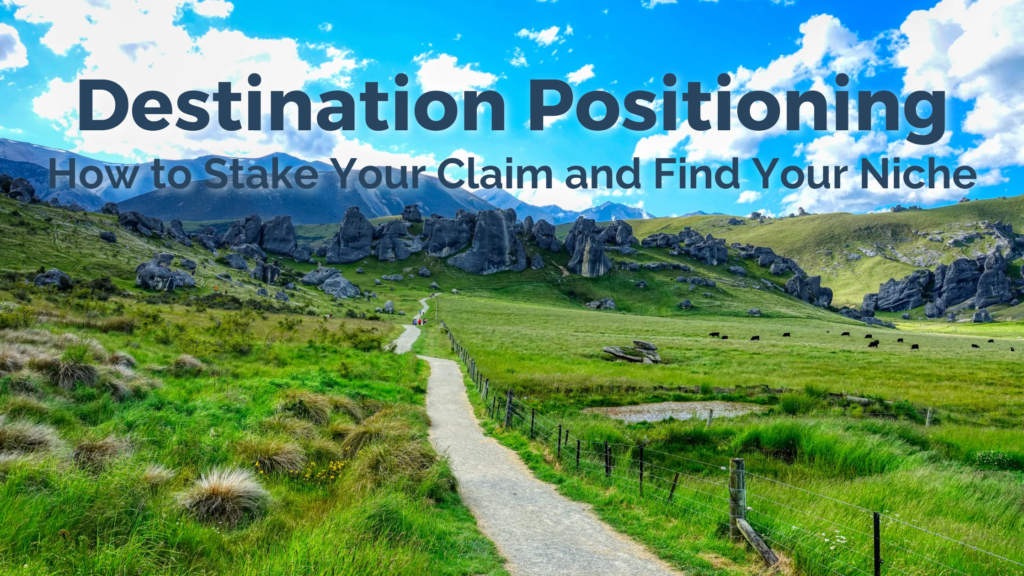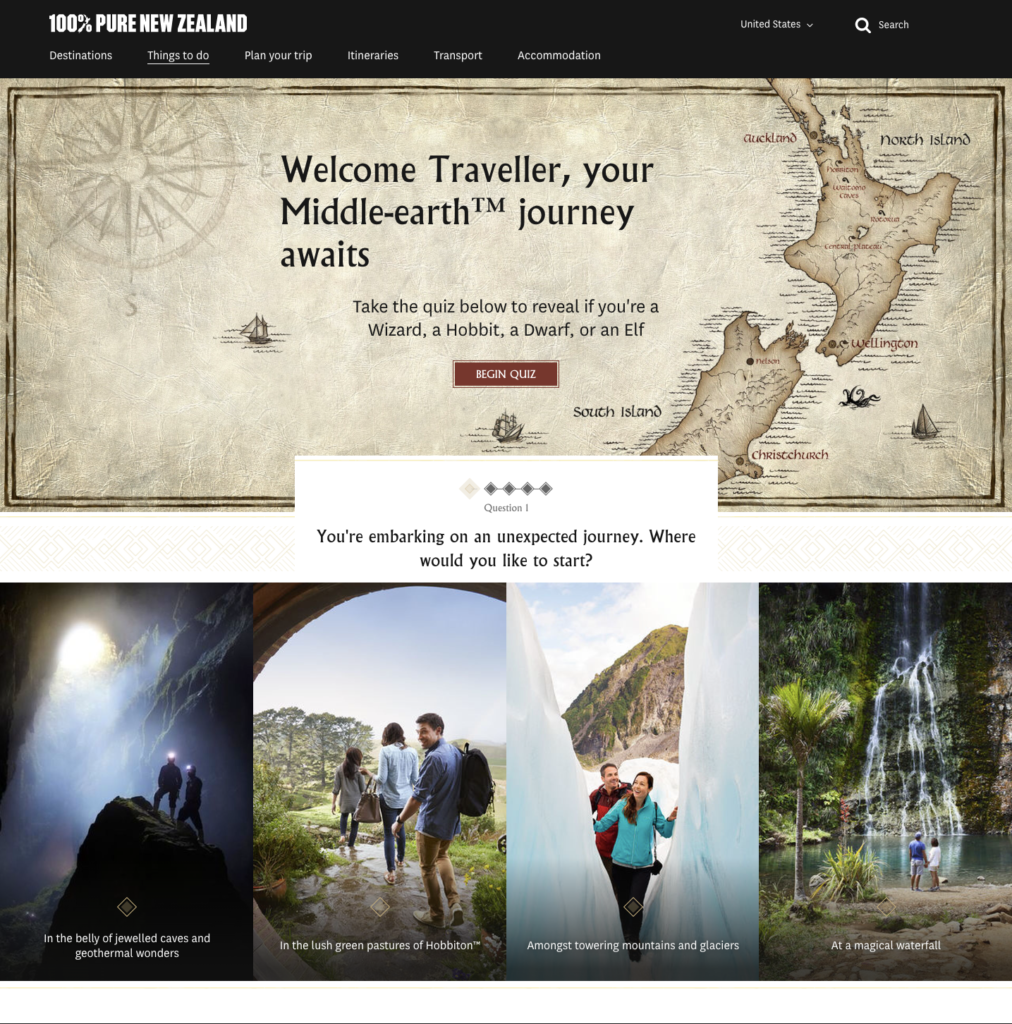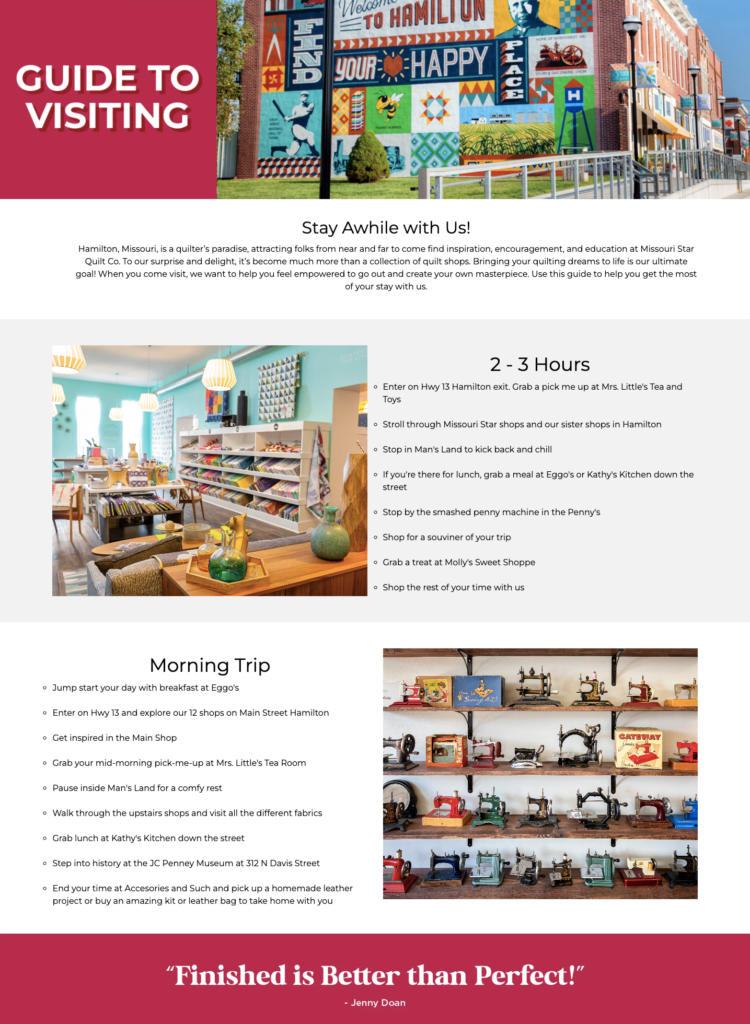Destination Positioning: How to Stake Your Claim and Find Your Niche
“You can’t be everything to everyone.” You’ve heard it before, but when talking about your destination it can be hard not to showcase “everything” — the great food, craft beverage scene, unique or boutique accommodations, hands-on museums, family attractions — it’s all exciting! So how do you hone in on your selling point and really find your area’s claim to fame?
To truly stand out from the crowd, you need to know what sets your destination apart from others. This process of defining yourself is known as destination positioning — and it’s essential for building an effective tourism marketing strategy.

Start by gaining a clear vision of who your target audience is. Take a hard look at both your strengths and weaknesses when compared to other destinations in your area or among your key drive markets in order to identify what makes you unique and appealing. Is there something you do better than anyone else? Something that you have more of per capita? A moment in history that only you can claim? A business that drives the entire community forward?
Pick one or two aspects of your destination (such as attractions, activities or experiences) and focus on those rather than trying too hard to appeal broadly across all demographics. By doing this, you can create personalized messaging that will resonate with potential visitors while also clearly communicating why they should choose your destination over all other options available.
Let’s look at some examples of strong destination positioning:
New Zealand: Home of Middle Earth

The first movie in Peter Jackson’s Lord of the Ring Trilogy was released in 2001, and the stunning location known as “Hobbiton” found its home in New Zealand. Now over 20 years later the destination still considers this a cornerstone of its tourism marketing. Visit the site and you will find information on Middle Earth right on its homepage, along with itineraries, activities and tours for fans of the Lord of the Rings and Hobbit movies to engage with. You can even take a “Middle Earth” quiz to learn where your Unexpected Journey in New Zealand begins.
Hamilton, Missouri: Quilt Town, U.S.A.

Hamilton, MO got its first taste of notoriety as the home of American Businessman James Cash (J.C.) Penney, but its true claim to fame came in 2008, when Jenny Doan founded the Missouri Star Quilt Co. A little quilt shop that soon gained a big YouTube following turned this town into a destination known today as “Quilt Town, U.S.A.” Now avid quilters flock to the town to visit the quilt shops, participate in sewing classes and makers retreats, see sights like the “World’s Largest Spool of Thread,” and more.
Sierra Vista, Arizona: Hummingbird Capital of the U.S.
Sierra Vista, located in Cochise County, Arizona is home to 15 species of hummingbirds. Named one of the top bird watching places on earth (with over 300 bird species in all) — and called the Hummingbird Capital of the United States, it is a bird lover’s paradise. Visitors can find information on when, where and how to see these birds, which types can be found in specific areas of Sierra Vista and learn about studies being conducted at the Southeastern Arizona Bird Observatory. For fans of our feathered friends, it is the destination to put on your bucket list.
Once you have identified your claim, niche or destination positioning, start creating experiences, videos, messaging and framing your marketing efforts around that topic. Consider what your target audience wants and needs to know about that specific topic — will they be looking for itineraries or daytime tours? Do you need to create a product around this claim, like a trail or an experiential package?
Then consider how the other pieces of your destination fit into this larger message and the role that restaurants, accommodations or other partners play. You don’t have to ignore the “everything else,” instead understand that those partners exist to make your core message stronger.
Don’t be afraid to go all in on your one thing. There is an audience for everyone, and finding your niche will lead you to your raving fans and create repeat visitors for life.
Author
Related Posts
How Curated Experiences Can Help Your Tourism Marketing
In years past, travelers may have been satisfied to see sites like the Eiffel Tower or Colosseum; now they want to get behind the scenes,...
Marketing for Group Travel: Building Solid Relationships with Tour Operators
Group travel is a significant segment of the tourism market, and if you want to see those buses pulling up to the curb and filling…
